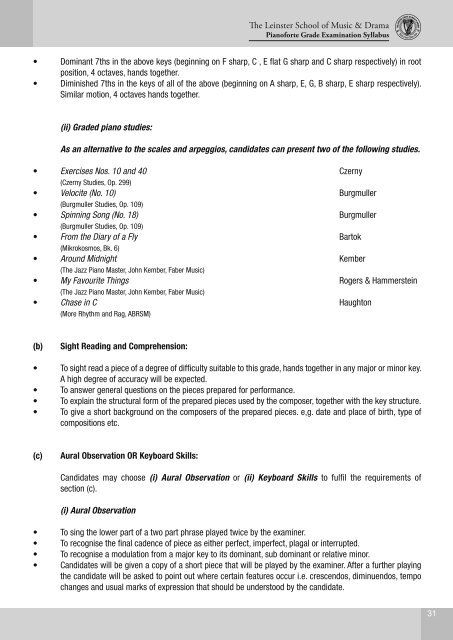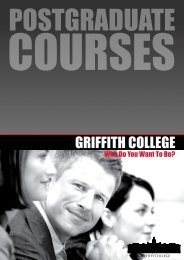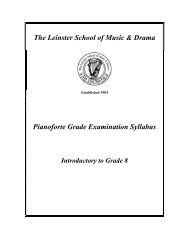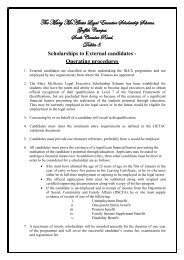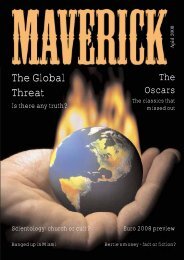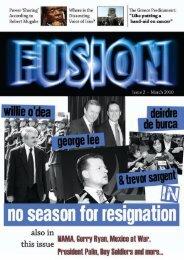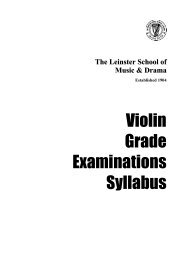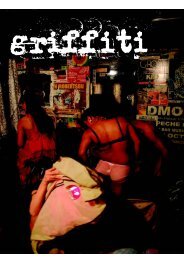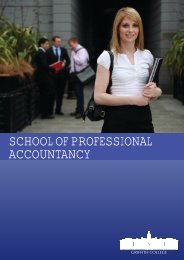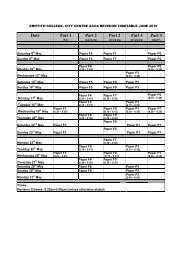The Leinster School of Music & Drama - Griffith College Dublin
The Leinster School of Music & Drama - Griffith College Dublin
The Leinster School of Music & Drama - Griffith College Dublin
- No tags were found...
You also want an ePaper? Increase the reach of your titles
YUMPU automatically turns print PDFs into web optimized ePapers that Google loves.
<strong>The</strong> <strong>Leinster</strong> <strong>School</strong> <strong>of</strong> <strong>Music</strong> & <strong>Drama</strong>Pian<strong>of</strong>orte Grade Examination Syllabus• Dominant 7ths in the above keys (beginning on F sharp, C , E flat G sharp and C sharp respectively) in rootposition, 4 octaves, hands together.• Diminished 7ths in the keys <strong>of</strong> all <strong>of</strong> the above (beginning on A sharp, E, G, B sharp, E sharp respectively).Similar motion, 4 octaves hands together.(ii) Graded piano studies:As an alternative to the scales and arpeggios, candidates can present two <strong>of</strong> the following studies.• Exercises Nos. 10 and 40 Czerny(Czerny Studies, Op. 299)• Velocite (No. 10) Burgmuller(Burgmuller Studies, Op. 109)• Spinning Song (No. 18) Burgmuller(Burgmuller Studies, Op. 109)• From the Diary <strong>of</strong> a Fly Bartok(Mikrokosmos, Bk. 6)• Around Midnight Kember(<strong>The</strong> Jazz Piano Master, John Kember, Faber <strong>Music</strong>)• My Favourite Things Rogers & Hammerstein(<strong>The</strong> Jazz Piano Master, John Kember, Faber <strong>Music</strong>)• Chase in C Haughton(More Rhythm and Rag, ABRSM)(b)Sight Reading and Comprehension:• To sight read a piece <strong>of</strong> a degree <strong>of</strong> difficulty suitable to this grade, hands together in any major or minor key.A high degree <strong>of</strong> accuracy will be expected.• To answer general questions on the pieces prepared for performance.• To explain the structural form <strong>of</strong> the prepared pieces used by the composer, together with the key structure.• To give a short background on the composers <strong>of</strong> the prepared pieces. e,g. date and place <strong>of</strong> birth, type <strong>of</strong>compositions etc.(c)Aural Observation OR Keyboard Skills:Candidates may choose (i) Aural Observation or (ii) Keyboard Skills to fulfil the requirements <strong>of</strong>section (c).(i) Aural Observation• To sing the lower part <strong>of</strong> a two part phrase played twice by the examiner.• To recognise the final cadence <strong>of</strong> piece as either perfect, imperfect, plagal or interrupted.• To recognise a modulation from a major key to its dominant, sub dominant or relative minor.• Candidates will be given a copy <strong>of</strong> a short piece that will be played by the examiner. After a further playingthe candidate will be asked to point out where certain features occur i.e. crescendos, diminuendos, tempochanges and usual marks <strong>of</strong> expression that should be understood by the candidate.31


